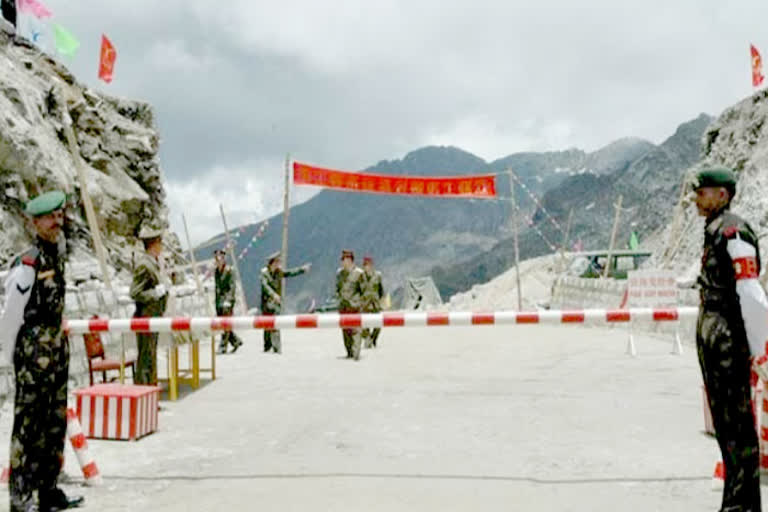New Delhi: The August 30, 2021, incident at the Barahoti pasture — 'Wu Je' to the Chinese — is nothing very unusual in the disputed border between India and China in Uttarakhand's Chamoli district, a senior source familiar with the issue in the Indian Army told ETV Bharat.
"The incident at Barahoti is nothing out of the ordinary. The border is disputed and both sides patrol the area according to their own perceptions. Usually, after reaching the limits of the perceived border, border patrols camp on the site for some time which includes leaving markings, painted stones and traces of having occupied the area so as to establish territorial claims before leaving. This is what the PLA patrol party did on August 30," the source said.
"It is only when the patrolling teams come face-to-face with each other that a confrontation happens and there are certain mutually-agreed established standard procedures like the banner display drill to defuse such situations," the official added.
An 80-sq-km sloping seasonal grassland, Barahoti, lies along a ridge located further north of the Nanda Devi National Park in Uttarakhand.
The August 30 border incident has gained noticeable traction in the backdrop of the massive military mobilization by both Asian giants across the Line of Actual Control (LAC) in eastern Ladakh.
Over the years, many of PLA’s transgressions into Barahoti have been reported although the number of such incidents have picked up of late.
Admittedly, while border dispute resolution mechanisms are in place, it is precisely the failure of these mechanisms that sparked off the violent brawl on the northern bank of the Pangong Tso on May 5, 2020 which later snowballed into the mobilization effort on both sides of the border.
“But of course, the number of PLA troops present at the transgression site at Barahoti on August 30 was more than usual,” the official added.
Reports say there were about 100 PLA soldiers with about 55 horses that day at Barahoti. Usually, patrol parties comprise 15-20 soldiers.
According to Indian claims, the patrol party transgressed about 5 km inside Indian territory after crossing the Tun Jun pass. They hung around the area for a few hours damaging a bridge and other India-built makeshift infrastructure.
The 3,488-km-long LAC straddles one of the world’s most difficult and extreme terrains on the Himalayas and is spread across the Union territory of Ladakh (1,597 km) and the states of Uttarakhand (345 km), Himachal Pradesh (260 km), Sikkim (198 km) and Arunachal Pradesh (1,126 km).
The usual areas of such incidents include Daulat Beg Oldi, Depsang Plains, Demchok, Chumar, and the Pangong Tso in the western sector of the India-China border; Fish Tail, Asaphila-Longju and Lungma-Kerang areas in the eastern sector and Barahoti in the central sector.



